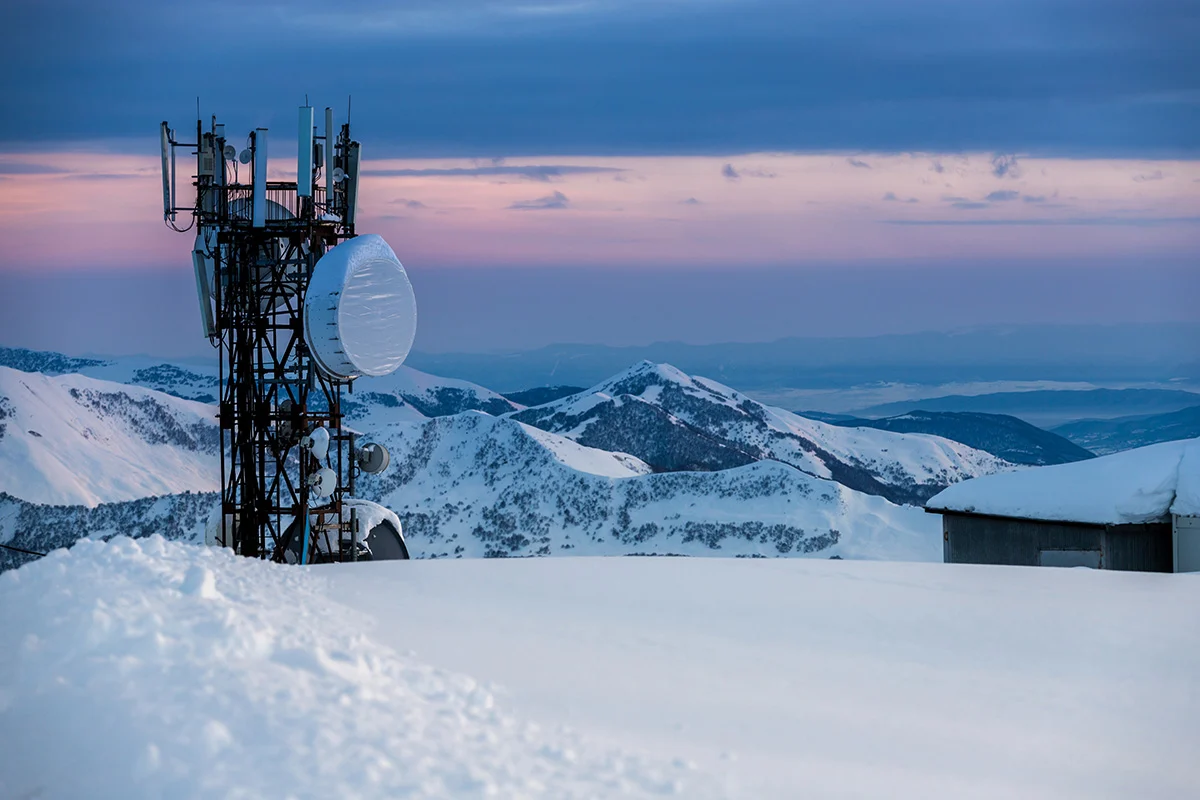At times, your low noise block downconverter (LNB) may be out of reach. It might be in a remote or unmanned location, built into an inaccessible enclosure, or mounted on the fuselage of an aircraft. In these situations, how do you ensure optimal performance of your LNB? Through remote monitoring and control (M&C).
Just as homeowners can use smartphones to adjust their thermostats while at work, terminal operators can remotely manage their LNBs. LNBs can become “intelligent” – filling in for humans who can’t access the outside of the plane or the inside of a walled compartment. For demanding commercial and military SATCOM applications, remote M&C is often a must. However, this feature is not available in most off-the-shelf LNBs, so a custom LNB is required.
Here are some of the ways that remote M&C can save you money and alert you to risks.
- Health monitoring
LNBs comprise a small part of a total satellite communication system – but if they fail, they can bring the entire system down. Remote health monitoring allows you to quickly determine if your LNB is at fault – or if the problem lies elsewhere – before you embark on extensive and expensive testing.
- Early warning signs
Proactive monitoring of metrics like temperature, current draw, and loss of lock can alert you to problems before damage is done. For example, temperature fluctuations can often be detected before electronic equipment fails. The Internet of Things (IoT) sensors that remotely monitor these indicators can also trigger a back-up system so you can avoid communication interruptions.
- Frequency band switching
Different geographic locations operate on different bands, so aircraft may need to switch bands as they travel from one location to the next. Orbital offers some LNBs with multiple local oscillators so that clients can remotely switch bands as needed – while the plane is in the air.
- Link budget optimization
With remote M&C, engineers can modify link budget parameters from anywhere. They can make LNB gain adjustments to avoid signal distortion or harmonics – without sending a technician to the site.
- Cost avoidance
Testing equipment physically can be an arduous, expensive process. And of course, costs can skyrocket if it’s necessary to dispatch a technician – particularly to a remote location. Downtime is another factor that must be considered. For example, what is the cost per day of a grounded airplane?
- Mobility
For the military in particular, mobility is key. Soldiers can now take suitcase-sized satellite terminals into the field but need to ensure constant communication. If these terminals are software-controlled, they can communicate with the LNB – and adjustments can be made on the fly, increasing both soldier efficiency and safety.
- Signal strength analysis
Through remote monitoring, engineers can assess and adjust signal strength all along its journey to ensure that at the end point, the signal is at the optimal level of performance. Without this capability, adjustments are typically made based on guesswork.
The M&C dashboard: Your control center
Through an M&C dashboard, satellite service providers and operators can monitor IoT sensors for a variety of metrics – from temperature to signal strength – and set up alarms should the sensors register outside pre-determined thresholds. They can also control things like band switching and link budget parameters, right from a desktop or mobile device. These M&C capabilities, together with your network operation center, mean you can provide higher service-level agreements (SLAs) to your customers.
Additionally, the long-term collection of M&C sensor stats can generate diagnostic data for specific terminals or a network of terminals – providing you with valuable information on reliability and availability.
Do you need an LNB with remote monitoring and control capabilities? We can help. Give us a call at +1 (604) 419-8585 or contact us to discuss your requirements.
For more on our custom LNBs, check out our post “Custom LNBs in the Real World.”
